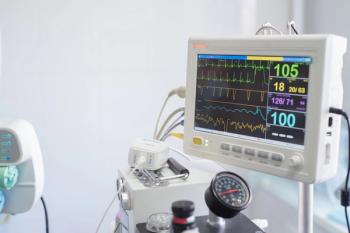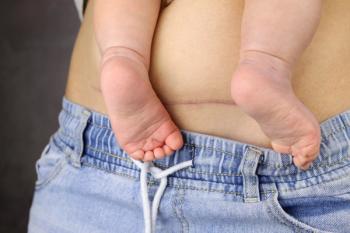
Predicting postoperative nausea and vomiting with a new model
A new predictive model, proven reliable and highly accurate, helps identify high-risk patients for postoperative nausea and vomiting, improving outcomes after gynecologic laparoscopic procedures.
A model has been developed for predicting the incidence of postoperative nausea and vomiting (PONV) in patients after gynecologic laparoscopic surgery, with results published in BMC indicating reliability and high clinical value.1
PONV is defined as nausea, vomiting, or retching within 24 hours following surgery. Rates of PONV are between 20% and 40% in the general population and up to 80% in high-risk patients, leading to various degrees of patient discomfort.
Complications linked to PONV include incision cracking, anastomotic bleeding, aspiration pneumonia, and increased hospital stay. As these complications often increase the burden on patients, many are willing to spend more to prevent PONV.2 Laparoscopic gynecological surgery frequently leads to PONV, making identification critical in these patients.1
Investigators conducted a study to develop a model capable of predicting PONV risk in patients after gynecologic laparoscopic surgery. Data was obtained from 1122 adult Chinese patients receiving gynecologic laparoscopic surgery under general anesthesia between January 1, 2018, and April 30, 2021.
Participants included women managing post-operative pain for gynecologic laparoscopic surgery with opioids reporting non-smoking status and non-PONV history. Those converting to open surgery, without complete case data, recent gastrointestinal and central nervous system diseases, cochlear diseases, and a history of mental illness were excluded.
Data about patients’ age, weight, height, body mass index, preoperative antibiotic type used, intraoperative anesthetic use, amount of fluid infused during the procedure, operation duration, end-tidal carbon dioxide pressure (PETCO2) values, urine volume, and bleeding volume was obtained.
PONV was measured on a visual analogue scale ranging from 0 to 10. A score of 0 indicated no nausea and vomiting while a score of 10 indicated the most severe nausea and vomiting. Scores of 1 to 4 were considered mild, 5 to 6 moderate, and 7 to 10 severe.
There were 1026 patients included in the final analysis, with 718 in the development group and 308 in the internal validation group. External verification data was obtained from 207 patients from the Third Affiliated Hospital of Southern Medical University, Guangzhou, China.
Independent variables were optimized using a Lasso regression method. This allowed 28 variables in the development group to be reduced to 14 potential predictive factors. After backward elimination, the final variables were the remifentanil dose, the sufentanil dose in the analgesic pump, the propofol dose, surgery duration, neostigmine use, steroid use, and maximum PETCO2 value.
In the nomogram, protective factors after gynecologic laparoscopic surgery included propofol dose during surgery and steroid use. Risk factors included sufentanil dose in the analgesic pump, the remifentanil dose, neostigmine use, maximum PETCO2 value, and surgery duration.
Well-consistent predicted and observed probabilities for patients after gynecologic laparoscopic surgery were reported. High accuracy was indicated with a concordance index (C-index) of 0.802 in the development group and 0.857 in the internal verification group.
The external verification group had a C-index of 0.966. Based on the decision curve analysis, use of the nomogram for PONV prediction in patients after gynecologic laparoscopic surgery is more effective than either a treat-all-patients scheme or a treat-none scheme when the threshold probability is between 2% and 86%.
These results indicated efficacy from the model toward predicting PONV following gynecologic laparoscopic surgery. Investigators concluded this model can be used to determine when early medical intervention for preventing PONV is needed in patients undergoing gynecologic laparoscopic surgery.
References
- Luo D, Huang Z, Tang S, et al. Risk analysis of postoperative nausea and vomiting in patients after gynecologic laparoscopic surgery. BMC Anesthesiol. 2024;24(345). doi:10.1186/s12871-024-02727-y
- Gan T, Sloan F, Dear Gde L, El-Moalem HE, Lubarsky DA. How much are patients willing to pay to avoid postoperative nausea and vomiting? Anesth Analg. 2001;92(2):393-400. doi:10.1097/00000539-200102000-00022
Newsletter
Get the latest clinical updates, case studies, and expert commentary in obstetric and gynecologic care. Sign up now to stay informed.











